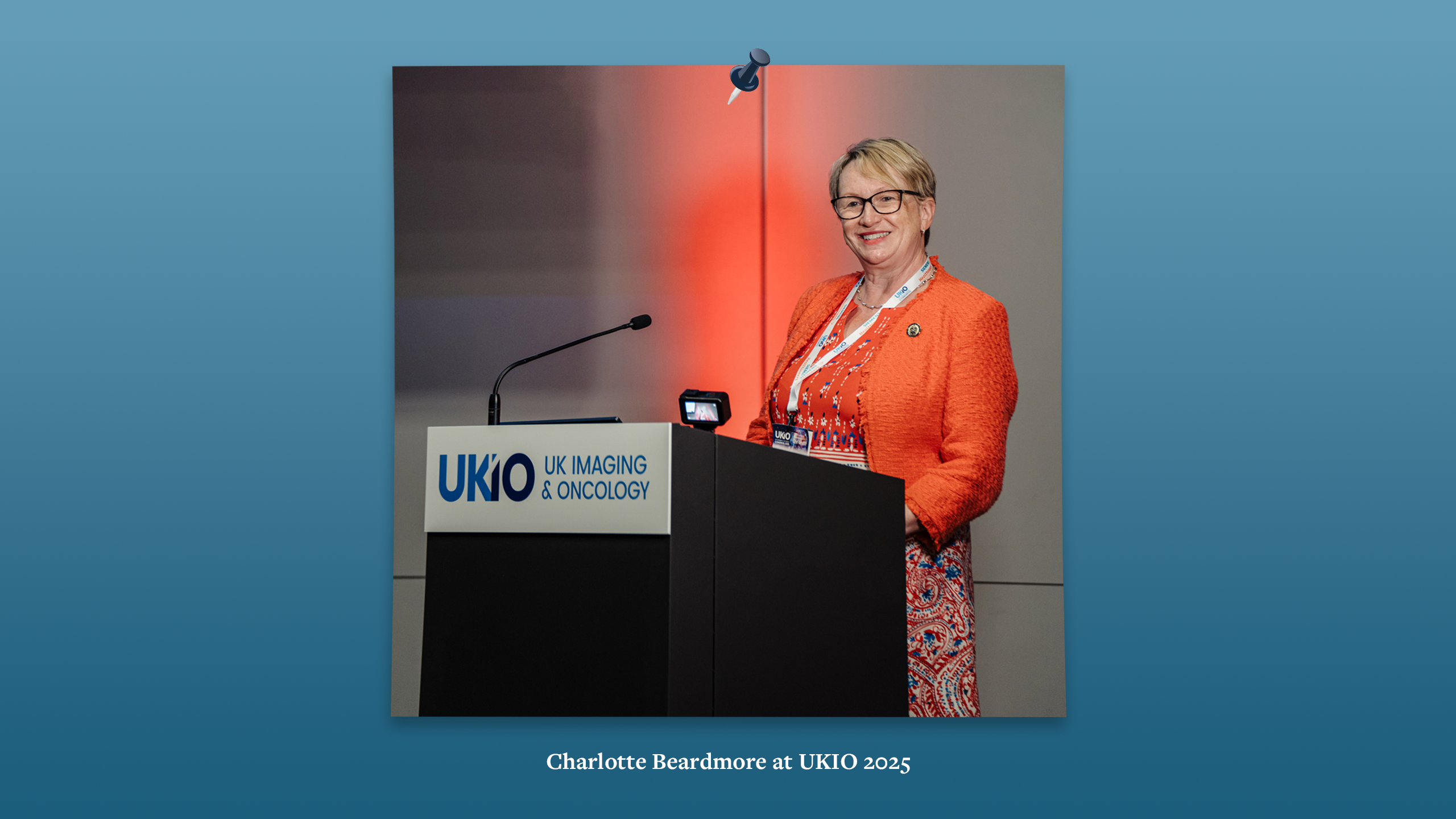Revisiting UKIO 2025
The conference returned in June, taking place at the ACC Liverpool. Synergy recaps its most anticipated sessions, lectures and features
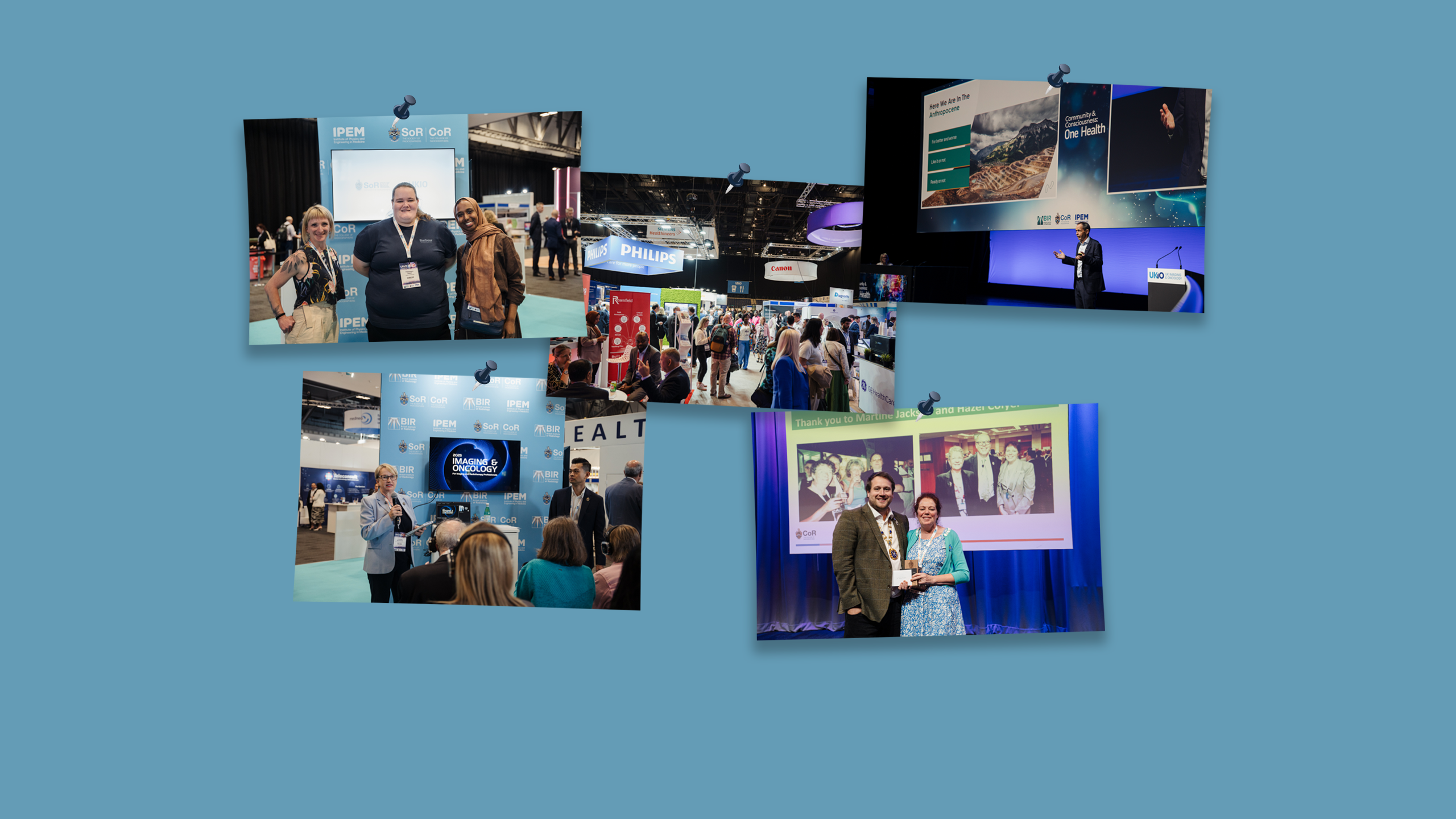
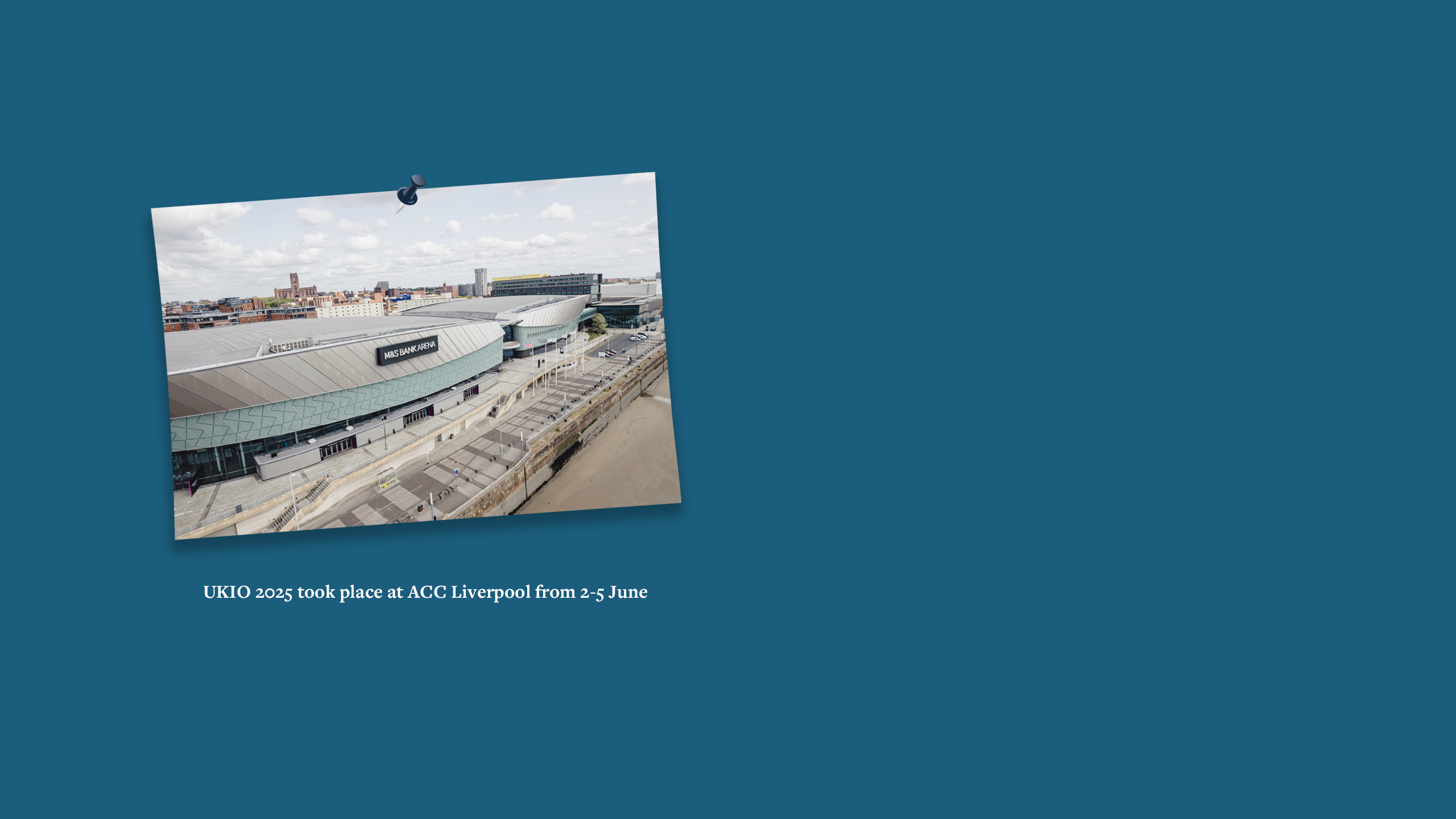
The 2025 edition of the UK Imaging and Oncology congress (UKIO) was one of the most anticipated to date. With conversations increasingly focusing on planned reform in NHS England, as well as sustainability in healthcare and the anticipation surrounding AI in the health service, attendees arrived at the conference hoping to get questions answered.
Thankfully, UKIO 2025’s packed itinerary was seemingly designed to tackle the most pervasive challenges facing imaging and oncology today. With numerous lectures, plenaries and interactive sessions on offer, attendees were able to choose sessions that appealed to them and get the most out of the conference.
Synergy was on the ground for all three days of UKIO 2025, which attracted hundreds of delegates and vendors to the ACC Liverpool on 2-5 June.
Let’s start from the beginning – the conference’s first plenary lecture, which was introduced by UKIO president Dr Emma Hyde. Welcoming delegates in Hall 1A, Emma acknowledged that many had come from more than 30 countries. She also introduced the conference’s theme – Community and Consciousness: One Health – and encouraged the audience to keep sustainability in mind as the “golden thread” running through the event.
Following Emma’s introduction, Mike Berners-Lee, professor in practice in the Lancaster Environment Centre at Lancaster University, delivered a talk on oncology and imaging in the anthropocene. “We had a fantastic start with the opening plenary lecture from Mike Berners-Lee on environmental sustainability,” said Richard Evans, CEO of the Society of Radiographers. “That’s one of the themes running through the congress this year, as well as community and patient-centred care.”
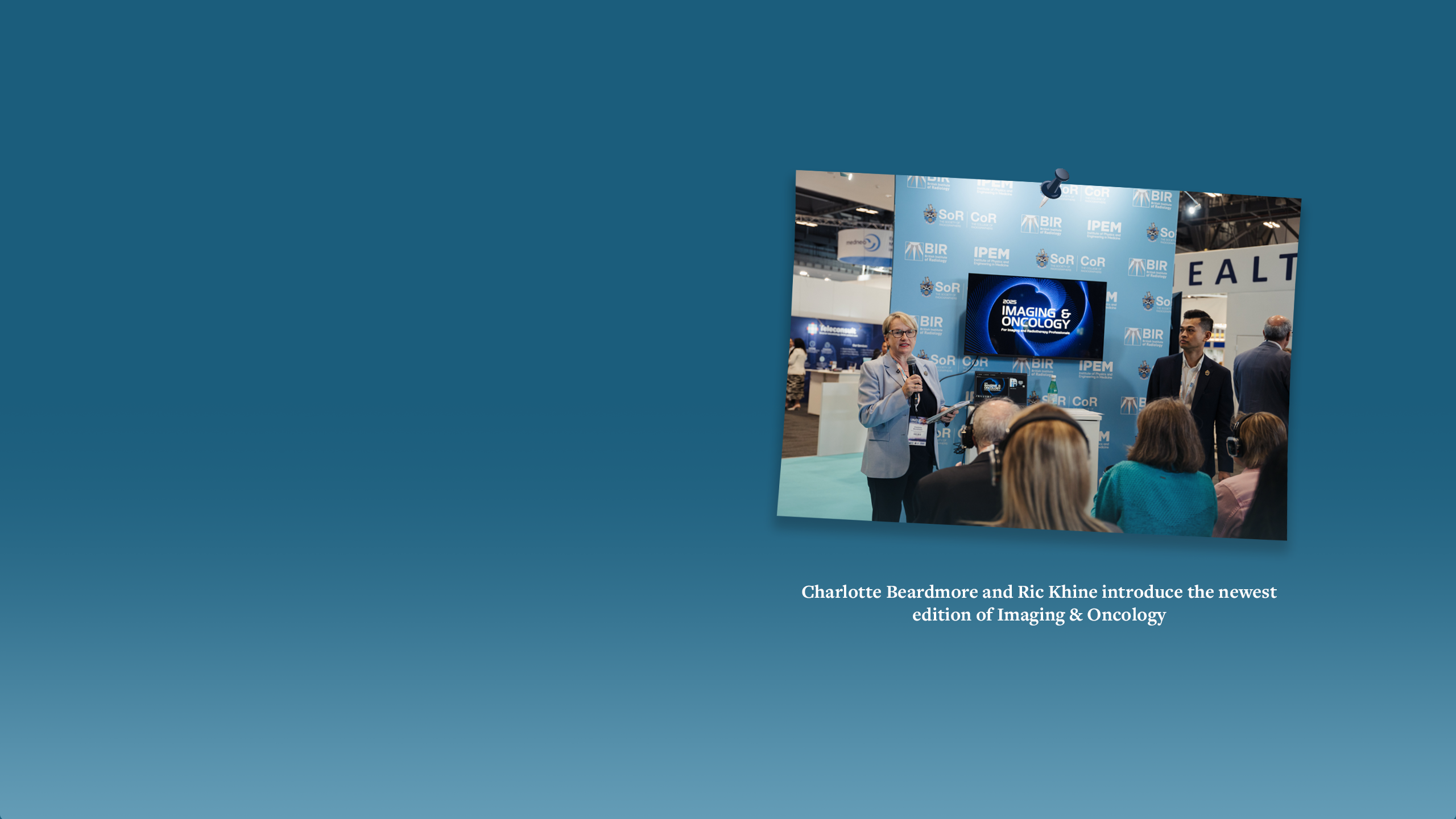
For a global audience
As co-organisers of the event, the SoR and CoR had a major presence at UKIO. The organisations shared a stand, where they offered talks and presentations from staff members across the three days. On the morning of day one, the stand was bustling with delegates as the SoR launched the newest edition of Imaging & Oncology (I&O) magazine. I&O is released yearly to coincide with UKIO.
Presenting the new edition, Charlotte Beardmore, the SoR’s executive director for professional policy, recounted the four previous editors of the magazine before handing over to Professor Ric Khine, who was appointed I&O editor in July 2024. Ric took over from previous editor Professor Ruth Strudwick.
Ric explained that, for this edition, he wanted to continue to focus on contemporary topics such as workforce development and emerging technology. However, he took a different approach with the magazine’s reach, making the effort to expand its global influence. This was achieved by including authors from countries including Australia.
He continued by saying that the latest edition of I&O is more digitally interactive, and features talking heads from authors explaining the purpose of the article.
I&O is available to read here.
‘A very big player in the carbon story’
As expected, day two of UKIO saw a continued focus on the sustainability theme. The morning plenary session consisted of presentations from radiography professionals across private and public companies, all of whom then took part in a panel discussion and Q&A session with the audience.
Under the theme of ‘The green prescription – strategies for a sustainable future’, each panellist presented on the topic of how the health service and the climate are intrinsically linked. Alexandra Hammond, associate director for net zero and sustainable procurement at NHS England, told the audience how, as the NHS, “we are a very big player in the carbon story”.
Dr Simon Lambracos, chief sustainability officer clinical fellow with Greener NHS and the Getting It Right First Time programme, educated attendees on the triple bottom line – environmental, financial and social impact – and explained how “the services we use to treat patients are actually contributing to their poor health”.
As for how to rectify this, he explained how the health service can affect energy consumption from an operational and technical perspective. Operationally, this could involve optimising patient scheduling and engaging energy-saving modes, while from a technical perspective he suggested keeping MRI energy consumption proportional.
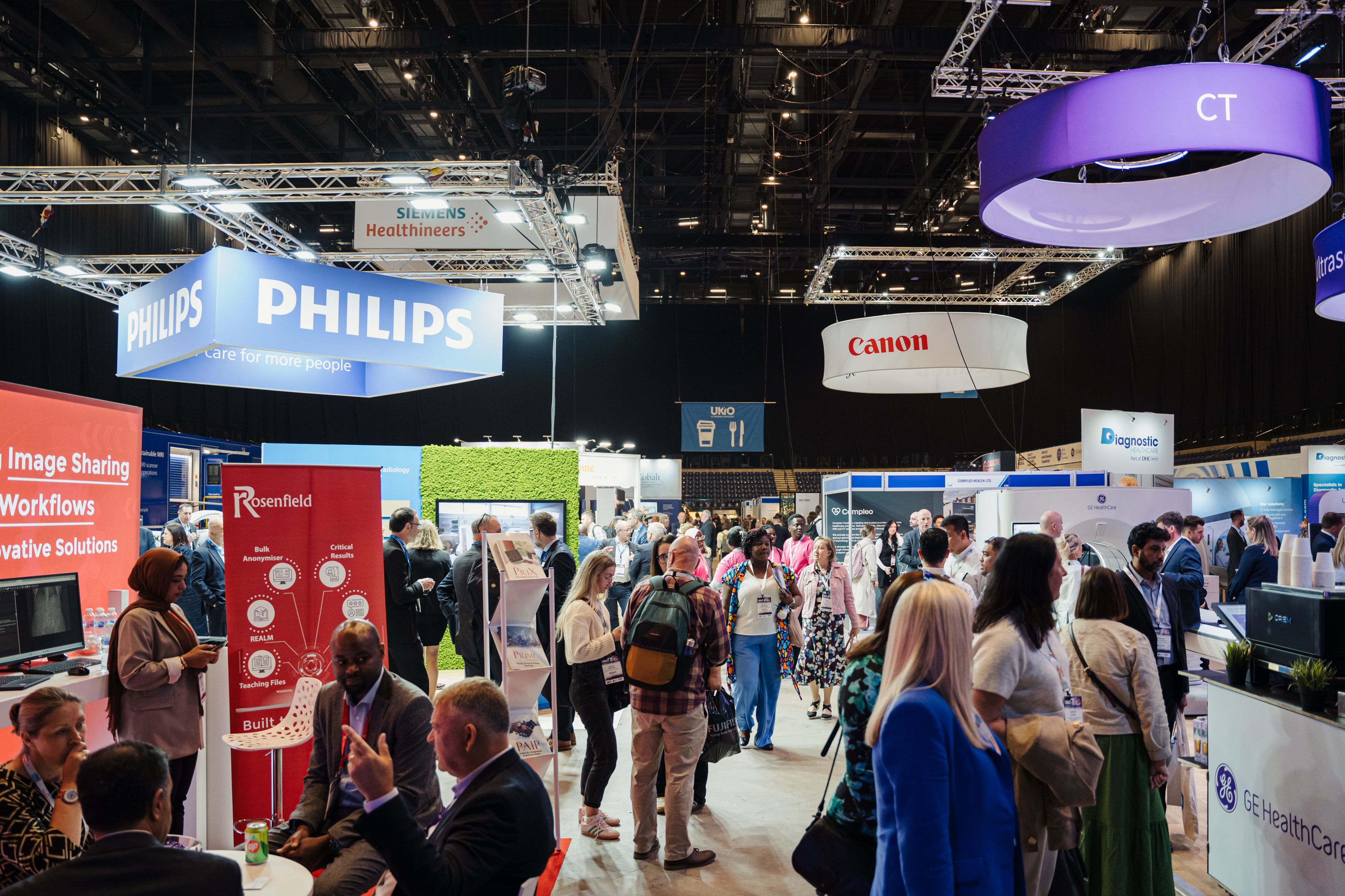
The role of AI
After lunch, delegates filed into Hall 1A to hear about the current state of play regarding AI and the NHS. Dr Katharine Halliday, president of the Royal College of Radiologists (RCR), took the crowd through the RCR’s perspective and pointed out that demand for radiology services was climbing – specifically, demand for emergency scans. The case for AI, she continued, comes down to meeting a rising demand for care, boosting accuracy and effectiveness, and delivering economic benefits.
For the practical implementation of AI, Katharine said there were “various applications and lots of promise”, but so far we didn’t know the real effects of AI. “It’s not at all clear where the money is going to come from,” she added. “Our role is to make sure we can implement these technologies safely,” she continued, referring to the functions of the RCR and the College of Radiographers.
Dr Rhidian Bramley, consultant radiologist at The Christie NHS Foundation Trust, spoke about the National AI Diagnostic Fund, which will see £21m provided to 12 imaging networks, covering 64 NHS trusts across England. He said the College of Radiographers had been “very proactive” when it came to looking into AI and its capabilities.
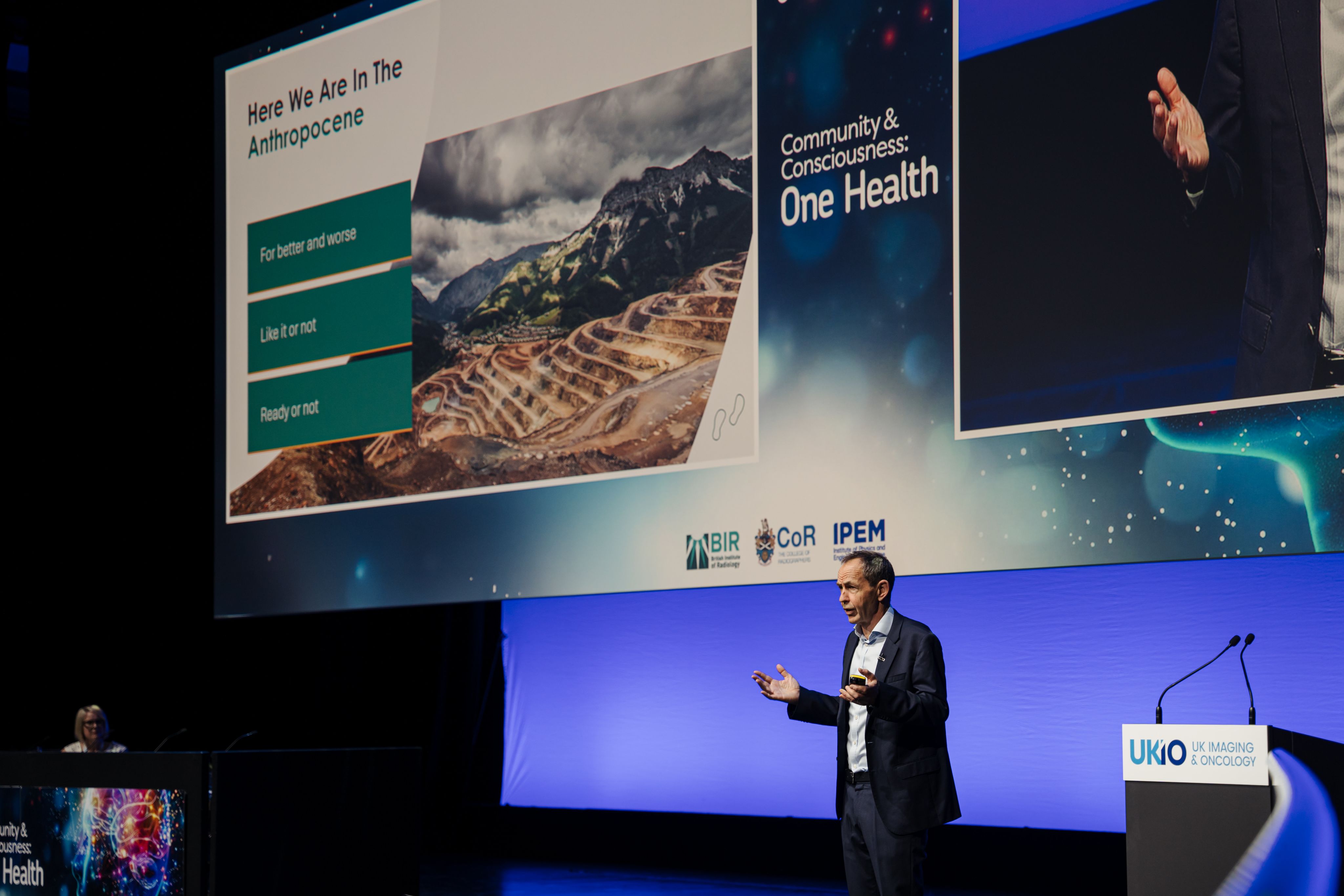
Benefits of mentorship and menteeship
Right after the AI session, Synergy made its way over to the Service Delivery Hub to hear about the Formal Radiography Research Mentoring (FoRRM) scheme, which is facilitated by the CoR. The session included a number of presentations from current mentors and mentees on why they signed up to FoRRM and how it has benefitted them.
Holly Spencer, a lecturer in medical ultrasound at AECC University College, explained how FoRRM gave her the opportunity to be paired with a researcher and benefit from personal and professional development. She first saw the mentorship scheme advertised on social media and in the SoR newsletter, and went on to attend the FoRRM session at UKIO 2024.
Shelley Smart, a senior lecturer at the University of Cumbria, also attended the FoRRM session at UKIO 2024 – though she had known about the programme for many years. In attending the session, however, she said she learned about the full extent of the programme. While Shelley understood what she would be getting out of the scheme, she said she didn’t anticipate the benefits of working with other mentees.
FoRRM mentor Dr Amy Hancock, a senior lecturer at the University of Exeter, was a mentee in 2019. Her mentor was Dr Philip Cosson, an associate professor at Teesside University. Amy spoke of how she had benefitted from the direction, focus and community brought about by the mentor role, as well as the wealth of mentorship skills she gained and how she grew to understand the overall mentorship process.
Mentors and mentees for the Leadership Mentoring Scheme (LMS) also took the stage at UKIO on Tuesday 3 June, to share their experiences working together to develop strategic, management and networking skills.
Chaired by Alexandra Lipton, professional officer at the SoR, the session saw pairs come up to the stage to express the value they’d gotten from the relationship, which went both ways, many mentors expressed.
Taking place from October to September, LMS participants have the chance to receive one-to-one, personalised mentorship so that they can achieve their direct, personal goals. Successful candidates can also join training and networking events run throughout the course of the scheme.
Attendees made full use of the conference
Chatting to Synergy during UKIO, Katie Thompson, SoR president elect, said there was a real buzz around the conference this year: “You can hear chatter all the time. There’s lots of talking, smiling, laughing around. Everyone seems really engaged with the event.
“I’ve met up with lots of people who I’ve previously worked with or have met during my time with [the] SoR, which has been really lovely. Some people I’ve not seen for many, many years, who are now working in industry.”
Katie also praised this year’s theme and acknowledged the waste generated by the radiography profession. “At the moment, it’s incredibly important and very much at the forefront of most news stories,” she continued. “And in radiography especially, there’s an awful lot of waste, and an awful lot of products we use that we know are not easy to recycle.
“So by working smarter, and changing the way we work, looking at our practices and asking ‘do we still need to do what we’re doing?’ is really important, because we can reduce our waste massively and help protect the planet in the future.”
Outgoing SoR president Tom Welton said he was happy with the decision to keep sustainability at the heart of the conference. “Ultimately, it was a bit of a wake-up call for the whole room,” he told Synergy, referring to the plenary lecture on day one. “Having sustainability as a theme within a big conference, in a venue that is also doing a lot around sustainability themselves, is so important.”
As for the atmosphere at the congress itself, Tom highlighted the networking opportunities available, as well as the chance to catch up with friends across the industry and attend the stellar sessions on offer. “Day one of UKIO, most of it is just catching up with people you haven’t seen for a while. It’s really great – all the hugs, all the chats you don’t get on a day-to-day basis. That’s what I love about day one.”
“Everything stands out,” he continued. “I’ve been circling my programme – it seems like I’m circling everything because I can’t seem to choose what to go and see.”
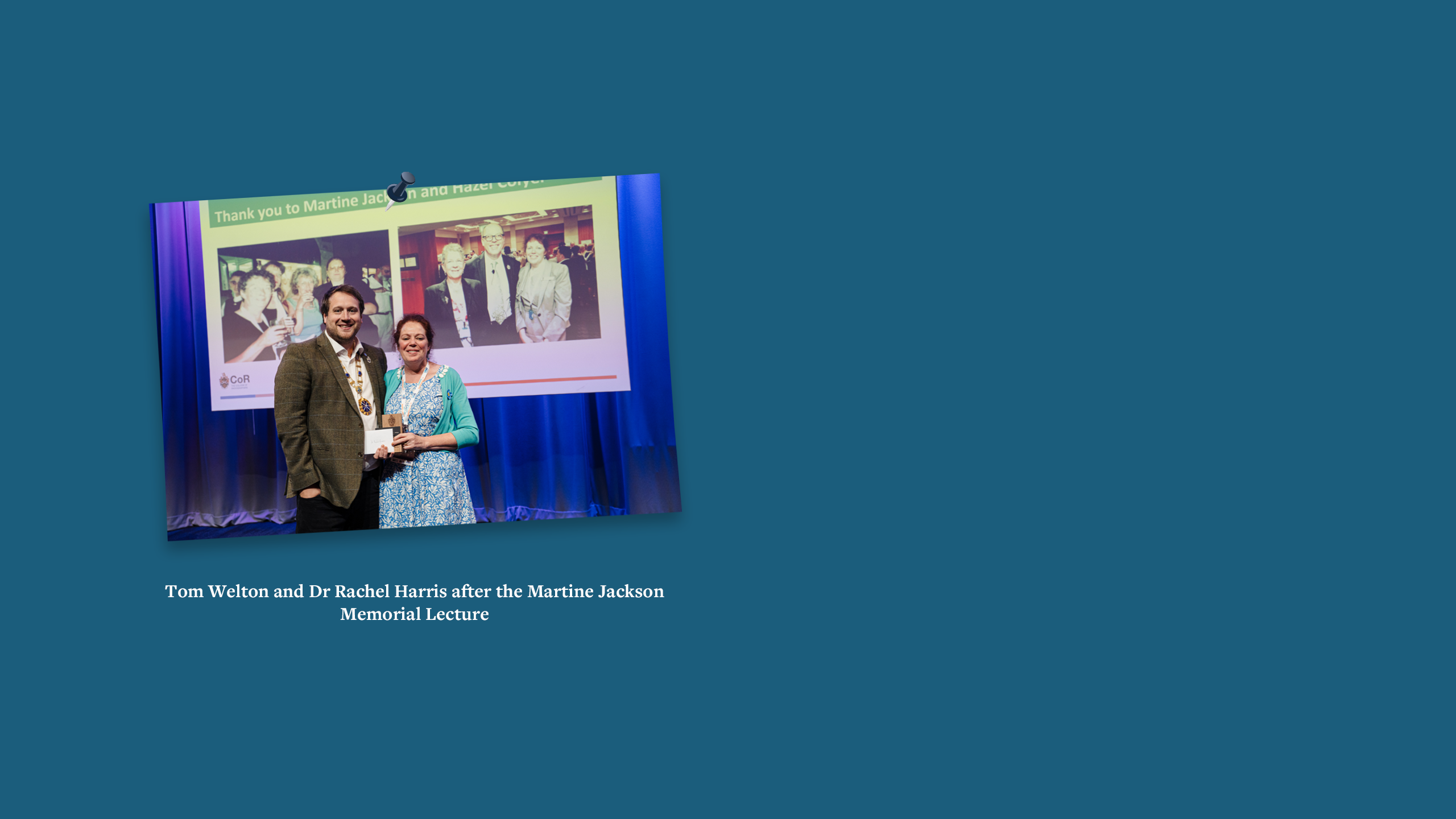
Jam-packed day three
The atmosphere on the final day of UKIO was slightly muted as attendees prepared to wrap up and head home. But that didn’t affect the conference programme, which was still readily attended and facilitated by enthusiastic speakers.
An eponymous lecture took place on each day of UKIO. On day three, the eponymous session was the Martine Jackson Memorial Lecture, which was delivered by Dr Rachel Harris. Rachel is recently retired, but formerly held the role of head of professional practice and education at the SoR. She began the session by sharing memories of Martine, who was described as “formidable”. She explained that Martine held big views, but the biggest was patient care and how it should be at the forefront of healthcare.
Rachel’s presentation focused mainly on qualitative research, which she said she loves because “it gives a voice to people”. She encouraged attendees to remember that, when they scan, they are scanning a person and not just a body part. This involves getting to know a patient personally, a concept some have deemed difficult in the modern NHS and its many pressures. To that, Rachel opined that getting to know a patient doesn’t necessarily take more time and, in the long run, it could actually save time when treating them because you are aware of their lifestyle and background.
More about UKIO
UKIO is an annual conference held in the ACC in Liverpool. It is a collaborative event held as a joint effort between the SoR | CoR, the Institute of Physics and Engineering in Medicine and the British Institute of Radiology. It first ran as UKIO in 2019.
SoR news provided daily recaps of UKIO 2025. Click on the corresponding link to read about day one, day two or day three.
To read about UKIO 2024, click here.
Read more



